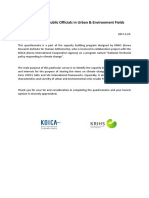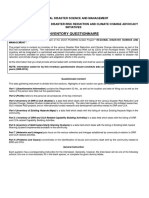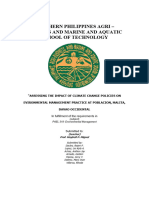0% found this document useful (0 votes)
15 views1 pageAssignment 1 - Summer Internship Program-1
The Alkhidmat Summer Internship Program for 2025 focuses on assessing local climate change impacts, specifically regarding forest and urban greenery and rainfall trends. Interns are instructed to research various aspects including green space coverage, waste disposal methods, local industries' emissions, and climate-related challenges, while also providing actionable recommendations. The program emphasizes community involvement and potential collaborations for tree planting initiatives to combat climate change effects.
Uploaded by
Ehtisham Ul haqCopyright
© © All Rights Reserved
We take content rights seriously. If you suspect this is your content, claim it here.
Available Formats
Download as PDF, TXT or read online on Scribd
0% found this document useful (0 votes)
15 views1 pageAssignment 1 - Summer Internship Program-1
The Alkhidmat Summer Internship Program for 2025 focuses on assessing local climate change impacts, specifically regarding forest and urban greenery and rainfall trends. Interns are instructed to research various aspects including green space coverage, waste disposal methods, local industries' emissions, and climate-related challenges, while also providing actionable recommendations. The program emphasizes community involvement and potential collaborations for tree planting initiatives to combat climate change effects.
Uploaded by
Ehtisham Ul haqCopyright
© © All Rights Reserved
We take content rights seriously. If you suspect this is your content, claim it here.
Available Formats
Download as PDF, TXT or read online on Scribd
/ 1






























































